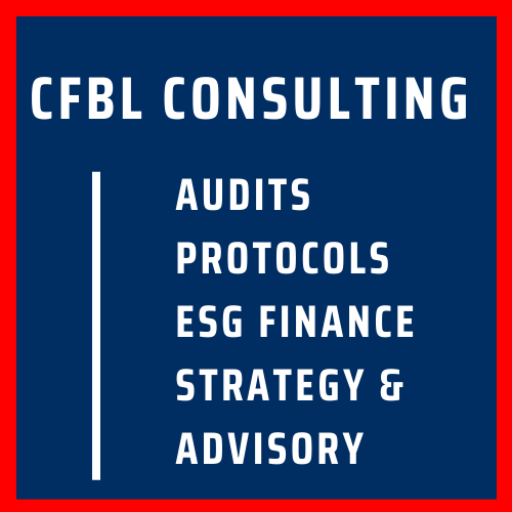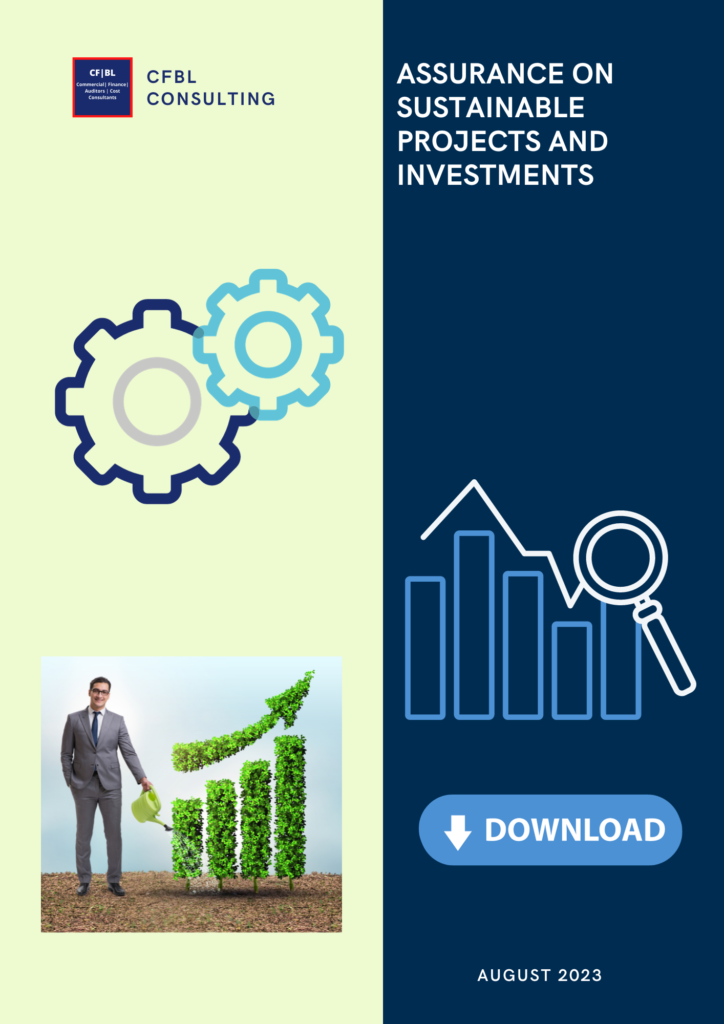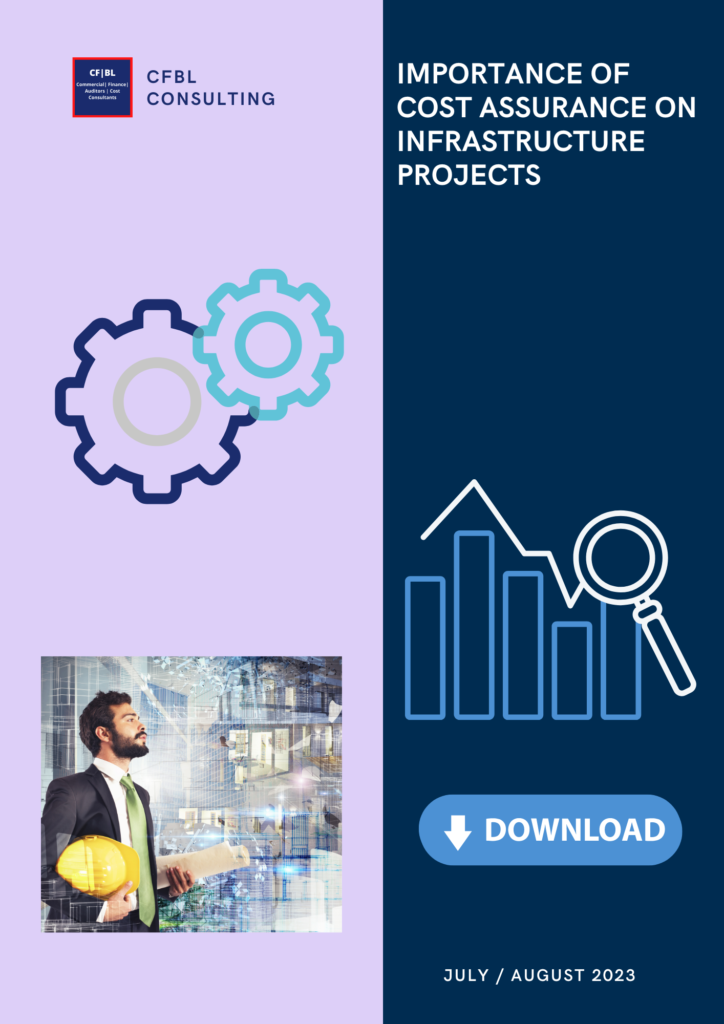Cecelia Fadipe – CFBL
Why is assurance necessary for sustainable projects?
Given that socially responsible investing (SRI) grew by more than 22% to $3.74 trillion in managed assets between 2010 and 2012, international investors take into account a variety of sustainability performance metrics in their investment decisions.

Overview
This report CFBL delves into the crucial role of sustainability assurance in today’s project management and investment landscape. Through this paper, one will acquire a comprehensive insight into the present state of ESG investing and its impacts, along with corporate ESG practices such as data collection, reporting, independent audit and assurance.
Introduction
In an era defined by heightened awareness of environmental and social challenges, the focus on sustainable projects and investments has evolved from being a niche concept to a pivotal driver of global economic transformation. As societies grapple with the profound implications of climate change, resource scarcity, and social inequities, there is a growing imperative to ensure that initiatives aimed at sustainability are not only well-intentioned but also effectively executed. This imperative has led to the rise of assurance on sustainable projects and investments – an essential mechanism that instills credibility, transparency, and accountability into the realm of sustainability initiatives.
- As the world acknowledges the interconnectedness of economic progress, environmental well-being, and societal advancement, the demand for tangible results from sustainable projects and investments has intensified.
- Investors, stakeholders, and the public at large are increasingly seeking evidence that commitments to sustainability are backed by robust strategies, sound governance, and demonstrable impacts.
- This shift in perspective has elevated the significance of assurance, which serves as a critical bridge between aspiration and reality in the realm of sustainability.
- The role of assurance extends far beyond traditional financial reporting. While financial metrics remain indispensable, the assessment of sustainable projects and investments necessitates a broader framework—one that encompasses environmental stewardship, social responsibility, and governance.
- In this context, assurance emerges as a linchpin that safeguards against greenwashing, ensures accurate measurement of progress, and facilitates informed decision-making.
Understanding sustainability assurance
According to the World Green Building Council, green buildings have the potential to save 25-35% more energy than conventional buildings.

Sustainability Assurance
- The quality of a company’s disclosures is linked to the company’s sustainability assurance.
- Generally, corporations that undergo audits perform better on environmental indices than those that do not. However, concerns have been raised about the effectiveness of sustainability assurance.
- According to a study on the quality of sustainability reports, sustainability reports are rarely directed toward auditors, suggesting that the verification procedures may not be thorough enough and that conclusions drawn from these reports should be interpreted with caution.
- This pattern is likely due to corporate pressure, as companies tend to use assurance as a strategy to reinforce their social legitimacy.
- This discourse delves into the multifaceted landscape of assurance on sustainable projects and investments. We explore its pivotal role in engendering trust, attracting capital, and fostering a culture of accountability.
- From evaluating the methodologies employed to quantify environmental impact, to scrutinizing the alignment of projects with global sustainability frameworks, we navigate the intricate terrain where ideals meet action.
- By understanding the nuances of assurance in the context of sustainability, we are poised to unlock the true potential of projects and investments that not only generate returns but also propel the world toward a more equitable, resilient, and sustainable future.
- Assurance on sustainable projects and investments stretches beyond a unidimensional approach. It encompasses a spectrum of functions that collectively contribute to its significance.
What is the status of sustainable assurance?
According to the Global Sustainable Investment Alliance, assets managed through responsible investment strategies increased by 15% between 2018 and 2020.

The status of play in sustainable assurance
- Environmentally focused proposals by investors increased by nearly 50% between 2021 and 2022 with a larger proportion of proposals being more focused on targets and strategies related to the management of Scope 3 emissions in 2022.
- As the push for a global system of sustainability reporting develops, investors, regulators, and politicians are focusing on the critical role of assurance in guaranteeing high-quality reporting a necessity for decision making.
- Low-quality assurance of sustainability information poses an increasing risk to both investor protection and financial stability. This is particularly crucial given the growing relevance and reliance on such information.
- The International Federation of Accountants’ (IFAC’s) 2019 – 2021 benchmarking study in The State of Play in Sustainability Assurance captures and analyses the extent to which companies are reporting and obtaining assurance over their sustainability disclosures.
- Moreover, the assurance standards being used, and the companies that are providing the assurance service. Assurance on sustainable projects and investments has become a crucial consideration in the modern financial landscape.
- As ESG factors gain prominence, investors seeking not only financial returns but also positive societal and environmental impacts has led to sustainable projects and investments, underpinned by principles of responsible investing.
The Impact of ESG on the Investment Spectrum
Roughly 89% of investors considered ESG issues in some form as part of their investment approach in 2022, up from 84% in 2021, according to a Capital Group study.

Benchmarking Global Practices
- For the third year in a row, data from the IFAC shows that, while the frequency of reporting ESG (environmental, social, and governance) data is very high and the incidence of assurance is increasing, there is still a significant discrepancy between reporting and assurance rates.
- In 2021, 95% of surveyed organisations reported providing sustainability information to some extent, however, only 64% received some level of assurance. This is an increase in comparison to 2020’s assurance percentage of 58%.
- According to recent data, sustainable investing has experienced substantial growth. In 2021, global sustainable investment assets will reach $35.3 trillion, a 15% increase from 2018. This surge reflects a paradigm shift in investor behavior, with institutions and individuals alike incorporating ESG criteria into their decision-making processes.
ESG Within the Investment Spectrum
- ESG investing is part of a broader spectrum of investments based on financial and social returns. On one end of the scale, pure financial investment seeks to maximise shareholder and debtholder value through financial returns based on absolute or risk-adjusted measures of financial value.
- At best, it presupposes that the efficiency of capital markets would effectively allocate resources to sections of the economy that maximise advantages and contribute more broadly to economic progress.
- Furthermore, within this spectrum, ESF investing focuses on optimising financial returns and employs ESG considerations to help identify risks and opportunities, particularly in the medium to long term.
- What distinguishes it from typical commercial investing is that it considers issues other than long-term environmental, social, and governance concerns and developments.
Corporate ESG Reporting
Environmentally focused proposals by investors increased by nearly 50% (46 percent specifically) between the 2021 and 2022 proxy seasons.

Corporate Reporting
- Corporate reporting delivers financial information on economic sustainability performance (ESP) and nonfinancial information on ESG sustainability performance to investors and other stakeholders to allow for informed decision-making.
- Previous research indicates that investors value ESP and ESG sustainability performance and that there is a positive correlation between the two.
- According to the 2022 PwC study, global investors rank good corporate governance and greenhouse gas emissions reduction as two of their top five investment priorities.
- Moreover, Corporate reporting is crucial for transparency, accountability, and building trust with stakeholders. It helps investors, regulators, customers, employees, and the public understand a company’s operations, performance, and impact on various aspects.
- In addition, more than 6,000 European companies are now required to provide ESG sustainability performance information in their 2017 financial reports and onwards, signalling a shift towards sustainability reporting.
- The International Federation of Accountants (IFAC) has approved better reporting of the UN Sustainable Development Goals (SDG) disclosure guidelines to address the creation of Sustainable and Resilient Accounting (SRA) standards created by the International Sustainability Standards Board (ISSB).
- Furthermore, the SDG standards and frameworks are utilized by over 76% of the 14,000 global enterprises that disclosed ESG information in 2020.
- Effective corporate reporting enhances a company’s reputation, attracts responsible investors, improves stakeholder relationships, helps with compliance, and supports informed decision-making.
Considering the Social
In 2022, proposals were more focused on targets which included or accounted for Scope 3 emissions. At least 55 out of 75 proposals submitted in relation to GHG strategies specifically requested Scope 3 emissions data.

Social Sustainability & Inclusion
- Social inclusion is categorized under one of the 17 United Nations Sustainable Development Goals (SDGs) that were approved globally in 2015. It refers to the efforts made to enhance the participation of individuals and groups in society and involves improving the ability, opportunity, and dignity of those who may be disadvantaged due to their identity. Majority of the objectives are people-centred, delivering increased social value. Human rights, equity, equality, and community, are all components of social sustainability and social inclusion.
- Considering social sustainability in terms of auditing and assurance raises questions, for example, the consideration of whether social sustainability and inclusiveness can be quantified, what the performance indicators would be, and what would count as a project manager’s scope of responsibility. Is it the way benefits are distributed to communities and stakeholders, or the composition of the project team? Why should we be concerned at this time when we are already dealing with risk management in a more VUCA environment and upskilling on sustainability?
Adherence to Regulations
- Regulatory compliance is especially crucial in businesses with strict compliance scrutiny, such as finance and healthcare, as well as industries where data protection, cybersecurity, and customer privacy are critical to business continuity and legally compliant operations.
- In recent years, organisations ranging from oil and gas companies (BP) and manufacturing plants (Republic Steel) to telecommunications companies (WorldCom), banks (JP Morgan Chase), and consulting firms (Arthur Andersen) have suffered the consequences of noncompliance.
- Maintaining compliance assists your organisation in mitigating risks such as security breaches and data losses, as well as avoiding disciplinary action, which could result in licence revocations, tarnished reputations, lost clients, and financial penalties and losses.
Resource Efficiency
Companies that succeed in reporting all three scopes of emission i.e (1,2,3) tend to gain a sustainable competitive advantage.

Resource Efficiency
- Unsustainable resource use has resulted in critical scarcity, climate change, and extensive environmental damage, all of which have a negative influence on the planet and people’s well-being. Also, more than 10% of the world’s population remains impoverished, unable to meet even their most basic necessities.
- To address this dual challenge, creative policies, redirected investment, environmentally sound technologies, international cooperation, and capacity building will be required to assist countries in transitioning to inclusive green economies.
- Producers will need to alter their product design, sourcing, manufacturing, and marketing strategies. Consumers will need to incorporate environmental and social issues into their purchasing decisions and live more sustainably.
- In activity-based budgeting, the project is divided into discrete activities or tasks, and the expenses related to each activity are estimated. This approach offers a thorough picture of project costs and aids in more efficient resource allocation.
- The traditional approach to budgeting starts with historical data or past budgets and then makes small adjustments depending on anticipated changes in expenses, inflation, and other factors. While simple, it might not fully take into account alterations in conditions or new project requirements.
- Benchmarking entails contrasting the estimated costs of the infrastructure project with those of like endeavours that have already been finished. This technique offers insights into potential changes that may be required for more precise budgeting and aids in the identification of potential expense outliers.
- It’s essential to include a contingency budget when handling unexpected risks and uncertainties. This additional funding aids in covering potential cost increases or adjustments to the project’s scope.
Assessment and evaluation of ESG investments
According to a PwC report from October 2022, ESG-focused institutional investment will rise 84% to U.S. $33.9 trillion in 2026, making up 21.5% of assets under management.

Lifecycle Assessment in Sustainable Investment
- Updated criteria, indices, and generally better methods and instruments are needed by sustainability investors to facilitate firm information on its effects on people, the world, and financial success.
- There are tools available to provide trustworthy, independent measures and indicators to assess how well businesses operate in terms of sustainability.
- Life cycle assessments (LCAs), for example, are now being employed extensively in research sectors where they were not previously widely used.
- Although the life cycle perspective has been introduced, ISO 14001:2015 does not state expressly which methodology is favoured.
Monitoring and Evaluation for Impact Investing
- Although the term “impact investing” was first used in 2006, its roots may be traced at least as far back as the 1970s, when questions about the social and environmental consequences of financial returns were first addressed.
- The number of funds that catered to socially conscious investors increased in the 1980s. In the 1990s, this movement kept expanding, leading to the introduction of the Domni Social Index, for instance.
- Self-identifies as an impact investor (i.e., seeks to have a beneficial impact on the environment or society) – Impact investments are made with the explicit goal of addressing social and environmental challenges like the HIV/AIDS epidemic, hunger, poverty, and climate change.
- Delivers a Financial Return on Capital – Since impact investing is primarily a business activity, it is expected that it will at the very least break even.
Integrated reporting
Some authors have indicated that auditors are more likely to consider material differences in a financial statement audit than on an assurance engagement that involves monitoring water usage.

Integrated reporting
- Integrated reporting combines material information about an organisation’s strategy, governance, performance and prospects in a way that reflects the commercial, social and environmental context in which it operates.
- Integrated Reporting examines value creation in the context of the shifting corporate landscape generating useful data about an organisation’s performance and value creation resulting in transparency and advantages for internal and external stakeholders.
- Integrated Reporting (IR) will be the way that corporate reporting is done in the future. More importantly, there are growing concerns that the assets covered by financial statements represent a significant part of shareholder value that is steadily declining.
- Today in 2023, this is significantly less, but as far back as 2015 according to the S&P 500 businesses’ net assets made up 16% of their market capitalization, down from 83% in 1975. Intangible elements not often recorded in financial records, such as reputation, responsible practices and long-term viability of the business, have evolved into key value drivers. Integrated Reporting is also about how a business has built value over the short, medium, and long term.
Frequently Asked Questions (FAQs)
Assurance entails determining how well ESG elements have been integrated into investment decision-making processes, risk management techniques, and the entire business model.

Q.1 What is assurance on sustainable projects and investments ?
A: Providing assurance regarding the environmental, social, and governance (ESG) aspects of projects and investment activities is referred to as assurance on sustainable projects and investments. This guarantees that these programmes adhere to moral standards, are in line with sustainable objectives, and benefit both society and the environment.
Q.2 Why is assurance important for sustainable projects and investments ?
A: Assurance gives sustainable projects and investments more credibility and transparency. It enables stakeholders, investors, and the general public to have faith in the veracity of the ESG claims made and the true contribution of the initiatives to sustainability goals.
Q.3 What standards are taken into account throughout the assurance process?
A: The assurance process assesses a variety of factors, including adherence to international sustainability frameworks like the UN Sustainable Development Goals (SDGs), environmental impact, social responsibility, corporate governance, risk management techniques, and ethical behaviour.
Q.4 What advantages do initiatives and investments in sustainability have when they are assured?
A: Assurance builds trust, draws ethical investors, lowers reputational risks, and aligns projects with global sustainability agendas. Additionally, it improves decision-making and gives businesses a competitive edge.
Q.5 Can small-scale projects be assured as well?
A: Yes, assurance is not just for big investments or projects. Smaller projects can also go through assurance to show their dedication to sustainability and draw in ethical investors.
Q.6 What effect does certainty have on investing choices?
A: ESG factors are being taken into account by investors more often. By proving a project’s commitment to long-term sustainability, which can eventually improve financial performance, positive assurance outcomes can motivate greater investment.
Q.7 For project assurance on sustainability, are there any standardised rules?
A: Yes, there are a number of standards and frameworks that offer a formal method for undertaking assurance, including the Global Reporting Initiative (GRI), Sustainability Accounting Standards Board (SASB), and International Standards Organisation (ISO) standards.
.8 What is the distinction between certification and assurance in the context of sustainability?
A: An expert assessment of the truthfulness of ESG statements and practises is provided as part of assurance. On the other hand, certification often entails fulfilling particular requirements established by recognised organisations and gaining a formal certification demonstrating compliance with specific standards.
Q.9 How frequently ought assurance to be carried out for ongoing projects?
A: The size of the project, industry standards, and legal constraints affect how frequently assurance is performed. Annual evaluations are typical, although high-impact or projects that are changing quickly may require regular reviews.
Q.10 How should businesses be ready for the assurance process?
A: To achieve a seamless certification process, businesses should set up reliable ESG data collection and reporting processes, interact with pertinent stakeholders, align their practises with accepted standards, and uphold transparency.
Reference
- Advertisement. (1976). Environmental Science & Technology, 10(12), pp.1108–1108. doi:https://doi.org/10.1021/es60122a905.
- Eklind, M. and Al-Halwachi, J. (n.d.). Sustainability Assurance a Qualitative Study Exploring the Assurance process, Team and Report of Sustainability Assurance. [online] Available at: https://www.diva-portal.org/smash/get/diva2:1441658/FULLTEXT01.pdf.
- Environment, U.N. (2017). Why does resource efficiency matter? [online] UNEP – UN Environment Programme. Available at: https://www.unep.org/explore-topics/resource-efficiency/why-does-resource-efficiency-matter.
- IFAC. (2021). The State of Play in Sustainability Assurance. [online] Available at: https://www.ifac.org/knowledge-gateway/contributing-global-economy/discussion/state-play-sustainability-assurance.
- www.apm.org.uk. (n.d.). Why inclusion matters in sustainable projects. [online] Available at: https://www.apm.org.uk/blog/why-inclusion-matters-in-sustainable-projects/.
- www.betterevaluation.org. (n.d.). Monitoring and evaluation for impact investing | Better Evaluation. [online] Available at: https://www.betterevaluation.org/methods-approaches/themes/monitoring-evaluation-for-impact-investing [Accessed 31 Aug. 2023].
- www.integratedreporting.org. (n.d.). The Growing Momentum for Integrated reporting: Part 1 | Integrated Reporting. [online] Available at: https://www.integratedreporting.org/news/the-growing-momentum-for-integrated-reporting-part-1/
- https://www.oecd.org/finance/ESG-Investing-Practices-Progress-Challenges.pdf
- https://www.apm.org.uk/blog/why-inclusion-matters-in-sustainable-projects/




